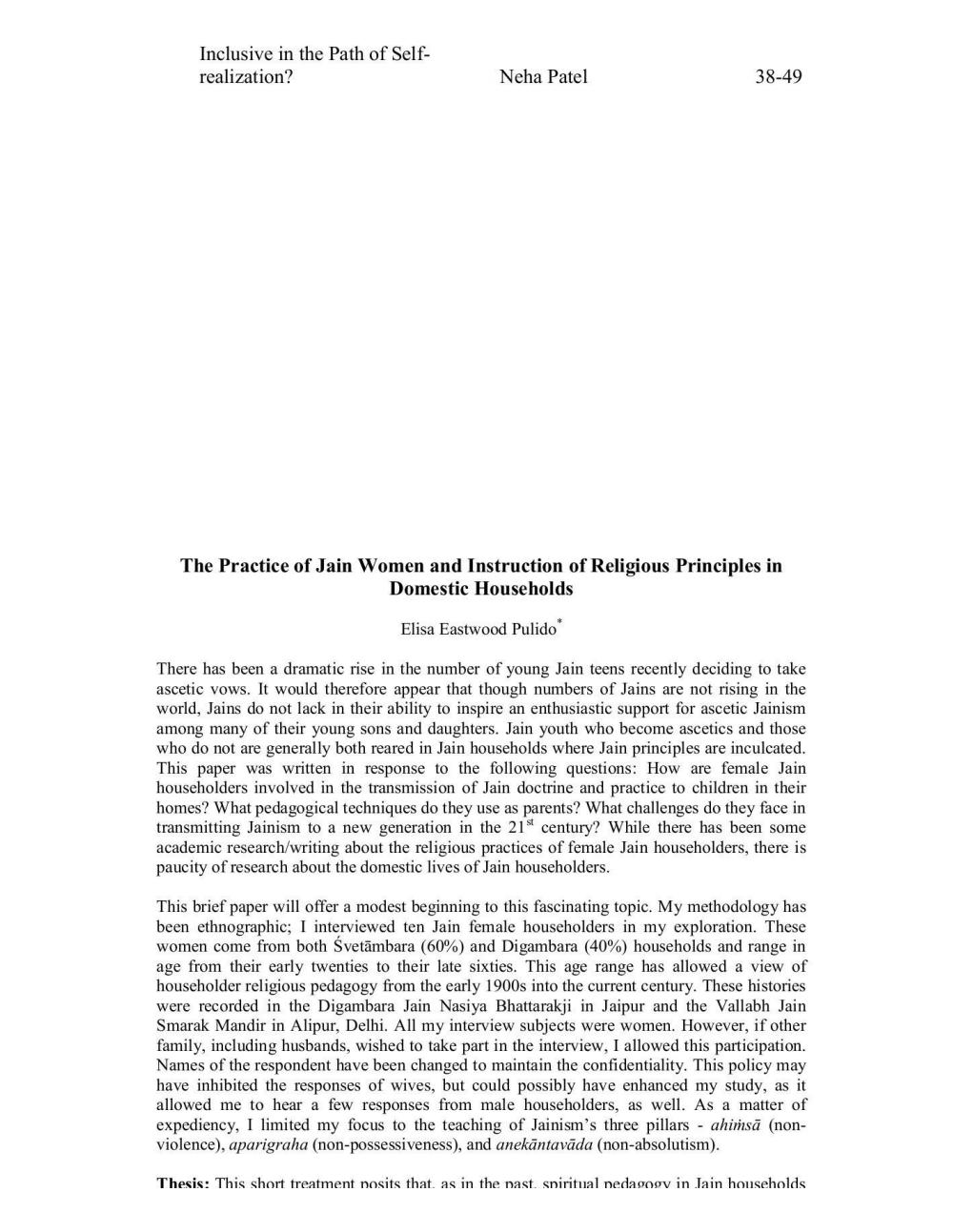________________
Inclusive in the Path of Selfrealization?
Neha Patel
38-49
The Practice of Jain Women and Instruction of Religious Principles in Domestic Households
Elisa Eastwood Pulido"
There has been a dramatic rise in the number of young Jain teens recently deciding to take ascetic vows. It would therefore appear that though numbers of Jains are not rising in the world, Jains do not lack in their ability to inspire an enthusiastic support for ascetic Jainism among many of their young sons and daughters. Jain youth who become ascetics and those who do not are generally both reared in Jain households where Jain principles are inculcated. This paper was written in response to the following questions: How are female Jain householders involved in the transmission of Jain doctrine and practice to children in their homes? What pedagogical techniques do they use as parents? What challenges do they face in transmitting Jainism to a new generation in the 21st century? While there has been some academic research/writing about the religious practices of female Jain householders, there is paucity of research about the domestic lives of Jain householders.
This brief paper will offer a modest beginning to this fascinating topic. My methodology has been ethnographic; I interviewed ten Jain female householders in my exploration. These women come from both Svetambara (60%) and Digambara (40%) households and range in age from their early twenties to their late sixties. This age range has allowed a view of householder religious pedagogy from the early 1900s into the current century. These histories were recorded in the Digambara Jain Nasiya Bhattarakji in Jaipur and the Vallabh Jain Smarak Mandir in Alipur, Delhi. All my interview subjects were women. However, if other family, including husbands, wished to take part in the interview, I allowed this participation. Names of the respondent have been changed to maintain the confidentiality. This policy may have inhibited the responses of wives, but could possibly have enhanced my study, as it allowed me to hear a few responses from male householders, as well. As a matter of expediency, I limited my focus to the teaching of Jainism's three pillars - ahimsā (nonviolence), aparigraha (non-possessiveness), and anekāntavāda (non-absolutism).
Thesis: This short treatment posits that. as in the past. spiritual nedagogy in Jain households




